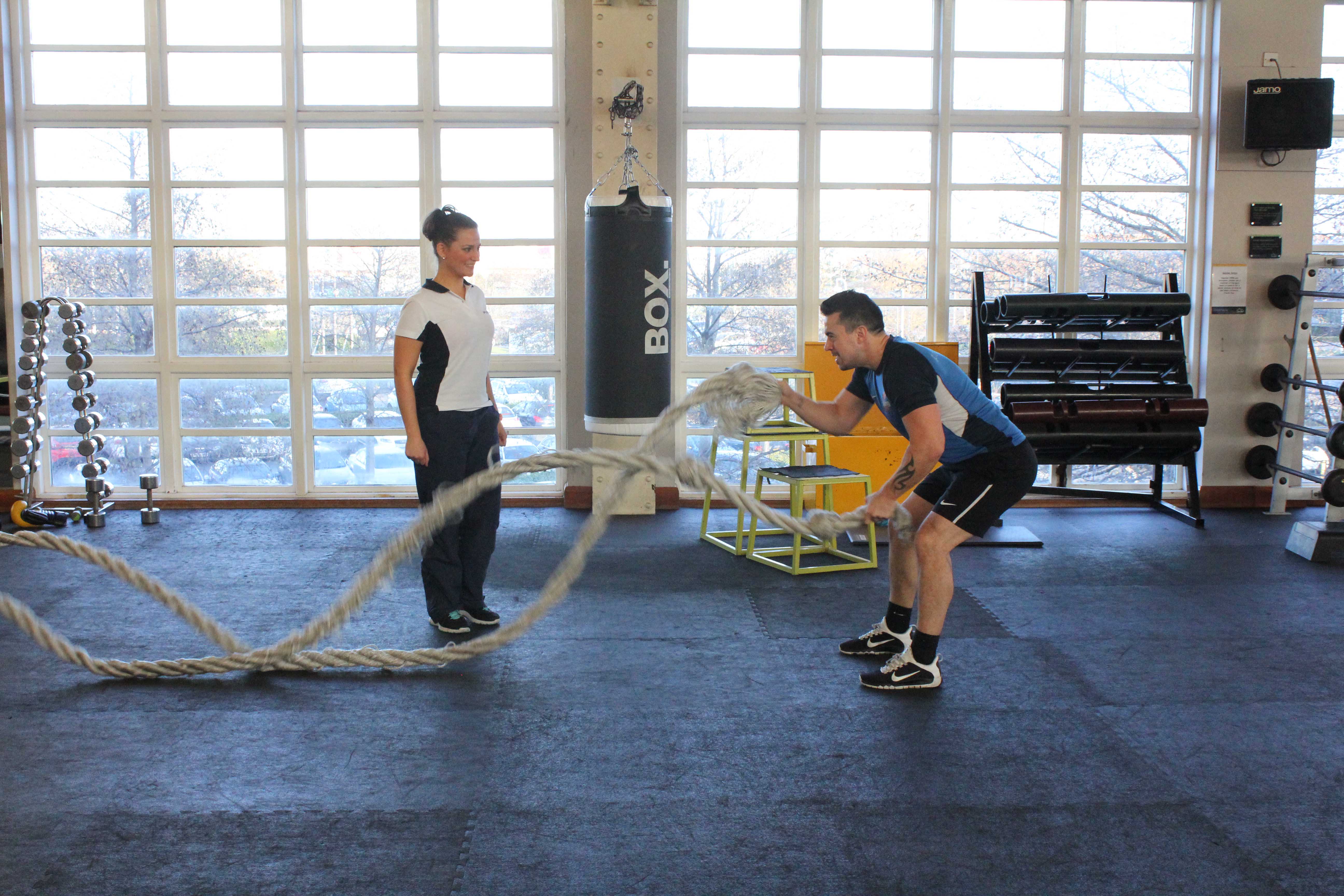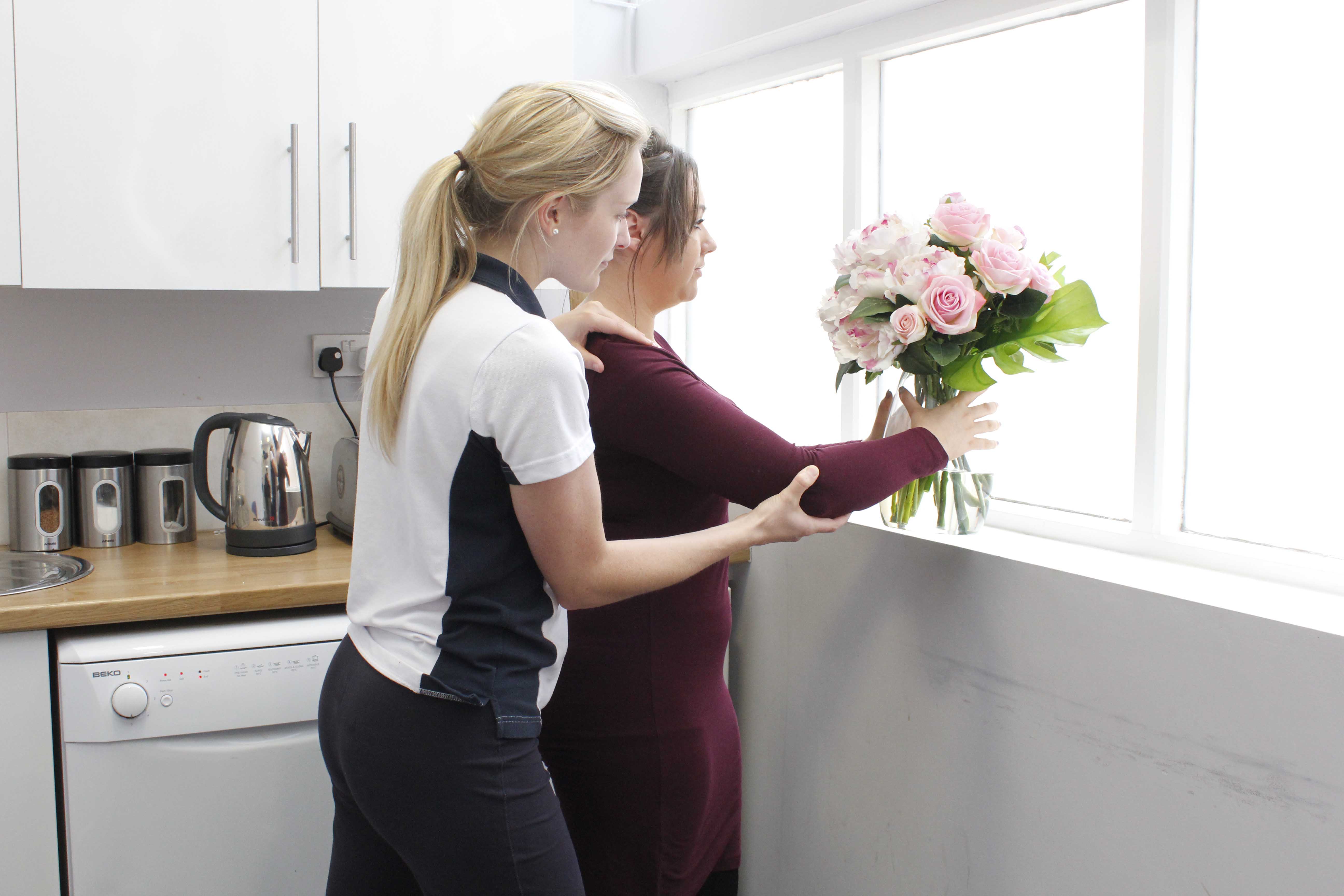Nerve Decompression of the Forearm
Nerve decompression of the forearm is a surgical procedure to treat and release the nerves in the forearm that have become compressed by their surrounding structures. Physiotherapy after nerve decompression is important to fully regain strength and function in the forearm, wrist and hand after the surgery.
 Above: Strengthening exercises for the muscles and connective tissues within the forearm
Above: Strengthening exercises for the muscles and connective tissues within the forearmNerve compression occurs due to a restriction of the space around a nerve. The space can be restricted due to a number of reasons including damaged or inflamed soft tissues (tendons, muscles or ligaments), narrowing of bony space, bone spurs (abnormal bone growth) and / or loose bodies. The forearm consists of three main nerves that can become compressed within the forearm.
- Median nerve
- Radial nerve
- Ulnar nerve
Median nerve
The median nerve originates from the upper spine and travels down the upper arm, elbow, forearm and the through the carpal tunnel in the wrist and into the hand. Most of the muscles on the front of the forearm and some muscles in the hand are supplied by the median nerve. The median nerve helps flex (bend) and abduct (out to the side) the wrist and fingers as well as pronates the forearm (turns the forearm so that the palm faces downwards). The median nerve supplies the skin of the palm and outer three and half fingers. The most common place for the median nerve to become compressed is within the carpal tunnel in the wrist, causing carpal tunnel syndrome. If the median nerve is compressed, the main symptoms experienced are loss of function and weakness in the muscles around the wrist and hand as well as a loss of sensation or tingling in the palm, and outer three fingers.
 Above: Therapist assisted functional exercise of the forearm, wrist and hand
Above: Therapist assisted functional exercise of the forearm, wrist and handRadial nerve
The radial nerve originates from the top of the spinal cord and then travels down, winding around the back of the upper arm and then through the elbow joint, down the forearm and then branches off at the back of wrist. The radial nerve allows the ability to straighten and twist the arm (pronation / supination) as well as helping to extend the wrist, thumb and fingers. The radial nerve provides sensation to the thumb side and the top of the forearm. Sensation at the back of the middle and index finger as well as the back of the hand is also provided by the radial nerve. The most common place for the radial nerve to become compressed is within the radial tunnel within the forearm. If the radial nerve is compressed, symptoms such as weakness and reduced function of the forearm, wrist, thumb and fingers are experienced. Compression of the radial nerve also causes numbness and reduced sensation along the top of the forearm.
Ulnar nerve
The ulnar nerve derives from the upper spinal cord and then travels down the upper arm, passing the inner side of the elbow, down the ulnar side of the forearm and down to the wrist and hand (on the little finger side). The ulnar nerve allows the ability to flex the wrist, fingers and thumb as well as helps adduct (bring in) and oppose the thumb. The ulnar nerve provides sensation in the little finger and some of the ring finger. The most common area that the ulnar nerve suffers compression is where it passes through the elbow joint. Symptoms associated with ulnar nerve decompression include weakness and loss of function in the muscles in and around the elbow, wrist, thumb and fingers as well numbness and tingling in the outer side of the hand, the little finger and the ring finger.
It is important to undergo nerve decompression surgery to reduce symptoms associated with an entrapped nerve of the forearm such as pain, tingling, weakness, reduced function as well as prevent permanent damage that can derive from the disorder. A comprehensive physiotherapy course is crucial to maximise the success of the nerve decompression surgery, prevent any problems occurring in the future and to help ensure the return of full or near to full function in the forearm.
The surgical approach implemented and the type of incision made depends on which of the nerves of the forearm that are entrapped. A typical nerve decompression procedure is done under general anaesthesia and involves the debridement and removal of damaged tissue, adhesions and bone spurs (abnormal bone growth). By removing the structures that are causing the compression, the affected nerve is subsequently released. The wound made is then closed up using stitches or sutures.
Symptoms after nerve decompression surgery
Immediately after your have undergone nerve decompression surgery of the forearm you will feel drowsy and your forearm, wrist and hand will initially feel numb as a result of the anaesthetic. You will experience pain and swelling in and around your affected forearm therefore you will be provided with appropriate pain killers. You will also be advised to keep your affected upper limb elevated above chest height to maintain good circulation and reduce the swelling. You may be given a splint depending on the type of nerve decompression you have had. An arm sling will be provided for essential protection and support and can be worn when you’re out and about. In the initial stages post surgery, you will feel some loss of strength, range of movement and function in your forearm and arm therefore physiotherapy will start immediately to aid recovery through appropriate rehabilitation methods. You will be unable to drive until you have a full and painless range of movement in your wrist and hand.
Physiotherapy after nerve decompression surgery
Physiotherapy is required as soon as possible once you have undergone nerve decompression surgery to manage pain and inflammation as well improving mobility, range of movement and strength in your affected lower arm, wrist and hand. A comprehensive physiotherapy programme with Physio.co.uk will help you achieve the return of full or near to full function in your forearm whilst also preventing the likelihood future problems and permanent damage of the nerves. Rehabilitation Physio.co.uk offers a programme that includes goals that are personal to you. Goals of your physiotherapy programme will include:
- To restore a symtom free lower arm, wrist and hand
- To restore full muscle strength
- To restore full range of motion (ROM)
- To restore full muscle length and flexibility
- To improve cardiovascular fitness and muscle endurance
- To re-establish function and independence
Early stages
- Pain modalities
- Cryotherapy (ice)
- Elevation
- Compression
- Mobility exercises
- Passive and active assisted range of movement exercises
Stretching and flexibility exercises for muscles of forearm, elbow, wrist and hand (biceps, triceps, brachioradialis, brachialis, pronator teres, supinator, wrist flexors/extensors) - Gentle strengthening exercises for muscles of forearm, elbow, wrist and hand (biceps, triceps, brachioradialis, brachialis, pronator teres, supinator, wrist flexors/extensors)
- Strengthening exercises and activities for shoulder and opposite arm
Later stages
- Continuation of modalities for pain and swelling
- Active assisted and active range of movement exercises
- Stretching and flexibility exercises for muscles of forearm, elbow, wrist and hand (biceps, triceps, brachioradialis, brachialis, pronator teres, supinator, wrist flexors/extensors)
- Progressive resistive strengthening exercises for muscles of forearm, elbow, wrist and hand (biceps, triceps, brachioradialis, brachialis, pronator teres, supinator, wrist flexors/extensors)
- Hand squeezing exercises (putty/sponge)
- Strengthening exercises and activities for shoulder and opposite arm
- Static arm cycle
- Hydrotherapy
- Functional activities relative to job, hobby or sport
- Emphasis on independent home exercises
Summary
Nerve decompression of the forearm is a surgical procedure to treat and release any compressed nerves in the forearm that are causing numbness, tingling and loss of function in the lower arm. Nerve decompression surgery involves the surgeon removing any structures such as damaged tissue, contractures, adhesions and bone spurs that may be impinging the affected nerve. The surgery is important to reduce symptoms caused by compression of the nerve, to improve function and to prevent permanent damage of the nerve that might occur if it is left untreated. Physiotherapy after nerve decompression of the forearm is essential tomaximise the success of the surgery, reduce pain and stiffness and improve mobility and function in the forearm, wrist and hand. Physio.co.uk offers a personal physiotherapy programme that will help you achieve the return of full or near to full function in your affected upper limb and to rapidly get you back to what it is you love whether it is your job, hobby or sport. Call Physio.co.uk now on 0330 088 7800 for more information or to book an appointment please contact us.

 0330 088 7800
0330 088 7800

































